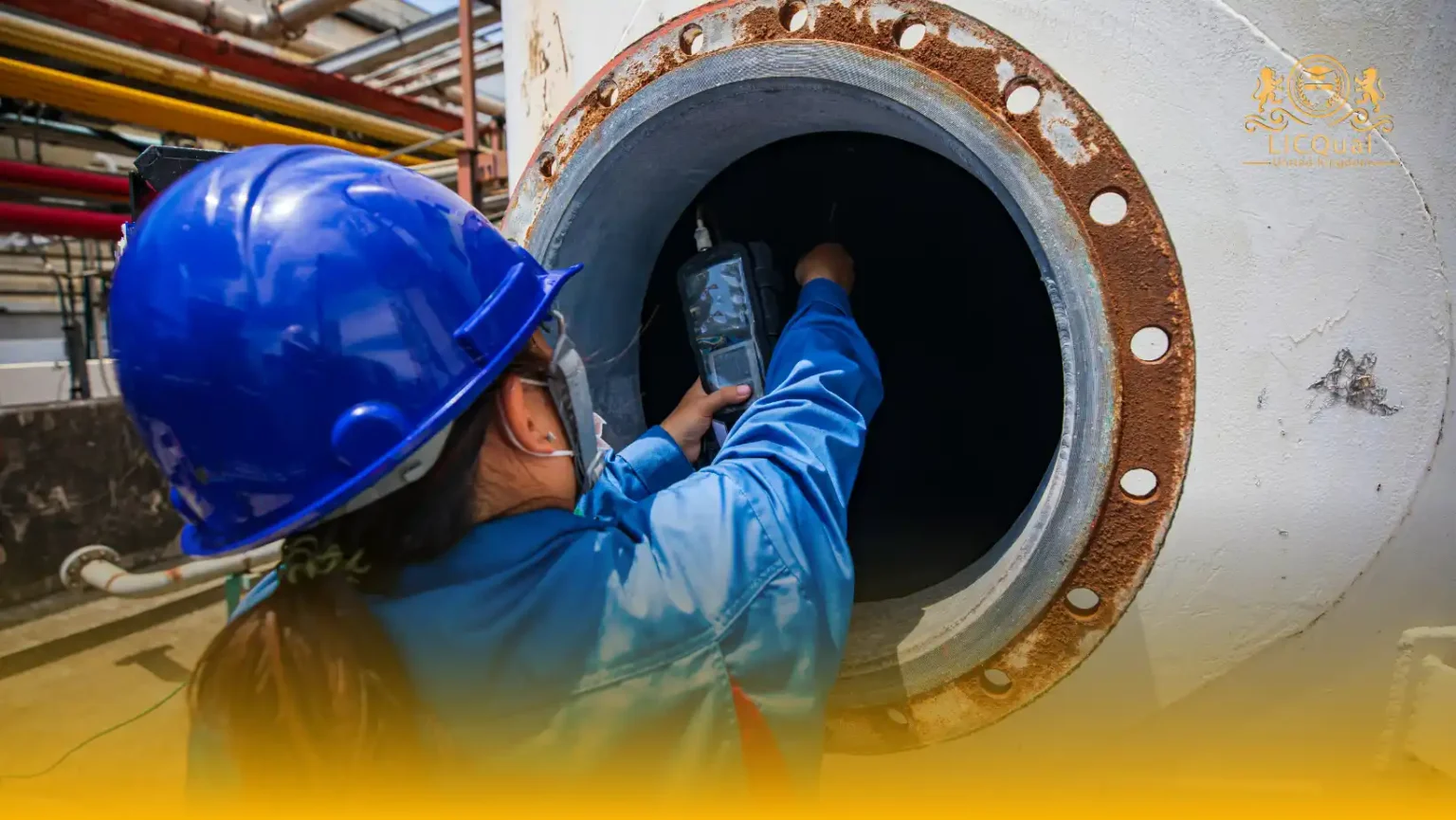The LICQual Level 2 Award in H2S Safety is a comprehensive intermediate qualification designed for professionals who operate in environments where hydrogen sulfide (H2S) gas presents a significant risk. This course builds on foundational H2S safety principles and is tailored for individuals who require a deeper understanding of the hazards, control measures, and emergency procedures associated with H2S exposure. Recognized internationally, this qualification emphasizes the importance of proactive safety management in high-risk sectors such as oil and gas, petrochemicals, wastewater treatment, and mining.
Through the LICQual Level 2 Award in H2S Safety, learners will explore the chemical and physical characteristics of H2S gas, health effects from different exposure levels, and real-time detection techniques. The course provides in-depth training on the selection, inspection, and use of personal protective equipment (PPE), including self-contained breathing apparatus (SCBA). Participants will also learn how to conduct site-specific risk assessments and implement effective mitigation strategies, ensuring a safer working environment for themselves and their teams.
This qualification is ideal for safety officers, technicians, supervisors, and other professionals who have direct responsibilities for managing safety in H2S-prone environments. The LICQual Level 2 Award in H2S Safety enhances the learner’s ability to identify H2S hazards, respond to emergencies, and support incident recovery protocols. By advancing knowledge and preparedness, this course helps organizations maintain compliance with international safety standards and reduce the risk of fatal incidents.
Training is delivered through interactive classroom sessions, industry-relevant case studies, and practical simulations that replicate real-world scenarios. The LICQual Level 2 Award in H2S Safety ensures that learners not only understand theoretical concepts but can also apply them in high-pressure environments. This hands-on approach strengthens decision-making and reinforces critical thinking in situations where rapid response is essential.
In summary, the LICQual Level 2 Award in H2S Safety is an essential qualification for professionals working in hazardous sectors where H2S exposure is a daily concern. It equips participants with the tools and confidence needed to manage risks effectively and respond to emergencies with precision. Successful completion of this course results in a recognized certificate, validating the learner’s capability to uphold safety and operational integrity in challenging work settings.
Course Overview
Qualification Title
LICQual Level 2 Award in H2S Safety
Total Units
6
Total Credits
6
GLH
12
Qualification #
LICQ2200445
Qualification Specification
To enroll in the LICQual Level 2 Award in H2S Safety applicants must meet the following criteria:
|
Qualification# |
Unit Title |
Credits |
GLH |
|---|---|---|---|
|
LICQ2200445-1 |
Understanding H2S Risk Assessment |
1 |
2 |
|
LICQ2200445-2 |
Effects of H2S on Human Health and Environment |
1 |
2 |
|
LICQ2200445-3 |
Operation of Gas Detection Equipment |
1 |
2 |
|
LICQ2200445-4 |
Selection and Use of Respiratory Protective Equipment |
1 |
2 |
|
LICQ2200445-5 |
Rescue Techniques and Emergency Drills |
1 |
2 |
|
LICQ2200445-6 |
Roles and Responsibilities in H2S Safety Management |
1 |
2 |
By the end of this course,applicants will be able to:
1. Understanding H2S Risk Assessment
Identify and evaluate potential sources of H2S in various industrial settings.
Conduct structured H2S risk assessments to determine levels of exposure and necessary control measures.
Apply the hierarchy of control to mitigate identified H2S risks.
Document and review risk assessment findings in line with workplace safety protocols.
2. Effects of H2S on Human Health and Environment
Explain the toxicological impact of H2S on human health at varying concentration levels.
Describe the short-term and long-term health effects caused by H2S exposure.
Assess the environmental consequences of H2S release and contamination.
Promote health monitoring and environmental safety practices to reduce H2S risks.
3. Operation of Gas Detection Equipment
Identify different types of H2S gas detection devices and their appropriate applications.
Demonstrate correct usage and basic maintenance of portable and fixed gas detectors.
Interpret gas detector readings and understand threshold limits and alarm settings.
Respond effectively to gas detection alerts in accordance with organizational procedures.
4. Selection and Use of Respiratory Protective Equipment
Differentiate between various types of respiratory protective equipment (RPE) used in H2S environments.
Select appropriate RPE based on risk level, task duration, and working conditions.
Demonstrate correct fitting, use, and care of RPE in simulated scenarios.
Recognize the limitations of different RPE types and ensure regular inspection and replacement.
5. Rescue Techniques and Emergency Drills
Explain the principles of emergency response and safe rescue operations in H2S incidents.
Demonstrate effective use of escape and rescue equipment in practical exercises.
Participate in emergency drills simulating H2S release scenarios.
Evaluate emergency response performance and recommend improvements.
6. Roles and Responsibilities in H2S Safety Management
Define key roles in H2S safety management including supervisors, responders, and safety officers.
Understand the responsibilities of individuals and teams in implementing safety protocols.
Promote a culture of safety through communication, reporting, and continuous improvement.
Support compliance with workplace policies and legal requirements related to H2S safety.
This diploma is ideal for:
- Workers in oil and gas, petrochemical, mining, and wastewater industries
- Safety officers and supervisors responsible for managing hazardous gas risks
- Personnel who have completed Level 1 H2S Safety training and seek advanced knowledge
- Emergency response team members operating in H2S-prone environments
- Contractors and field technicians working in confined spaces or high-risk zones
- Health and safety trainees preparing for roles in industrial safety management
- Individuals aiming to meet industry regulations and enhance job qualifications in H2S safety
- Engineers and technical staff involved in maintenance and operational tasks near H2S sources
- Environmental and occupational health professionals seeking specialized H2S training
- Line managers and team leaders responsible for ensuring safety compliance on-site
- New hires in high-risk sectors requiring intermediate-level safety induction
- Risk assessors and auditors evaluating safety systems related to gas exposure
- Training coordinators and HR personnel looking to upskill their workforce in H2S safety
- Offshore platform workers and drilling crew members exposed to potential gas leaks
- Employees working in remote or enclosed areas with limited ventilation and gas monitoring systems
Assessment and Verification
All units within this qualification are subject to internal assessment by the approved centre and external verification by LICQual. The qualification follows a criterion-referenced assessment approach, ensuring that learners meet all specified learning outcomes.
To achieve a ‘Pass’ in any unit, learners must provide valid, sufficient, and authentic evidence demonstrating their attainment of all learning outcomes and compliance with the prescribed assessment criteria. The Assessor is responsible for evaluating the evidence and determining whether the learner has successfully met the required standards.
Assessors must maintain a clear and comprehensive audit trail, documenting the basis for their assessment decisions to ensure transparency, consistency, and compliance with quality assurance requirements.







